
As a devoted knitter and unabashed animal lover, I've long been enamored with alpacas and their luxurious yarn. Let's face it: alpacas are adorable, and their fiber is irresistibly soft and drapey. But have you ever felt vicuña yarn? It's the crown jewel of camelid fibers – the softest of them all.
After years of daydreaming about "Made in Peru" yarn labels, I decided it was time to meet these woolly wonders in person. This summer, I finally embarked on a textile enthusiast's dream journey through Peru, visiting Lima, Cusco, Machu Picchu, and Titicaca.
My mission? To unravel Peru's yarn legacy. This Andean region is renowned for producing some of the world's finest knitting yarns, and I had questions:
Are those iconic images of traditional Peruvian women selling textiles surrounded by alpacas just marketing stunts?
Do these women actually sell handmade clothes and yarns from their own flocks?
Would I stumble upon farmers offering hanks of vicuña yarn straight from their personal herds?
Was I about to discover the handcrafted knitting yarn of my dreams?
Spoiler alert: The answer was yes – but not without a few tangled threads along the way, so read until the end.
Lima: First Encounters with Peruvian Fiber Arts
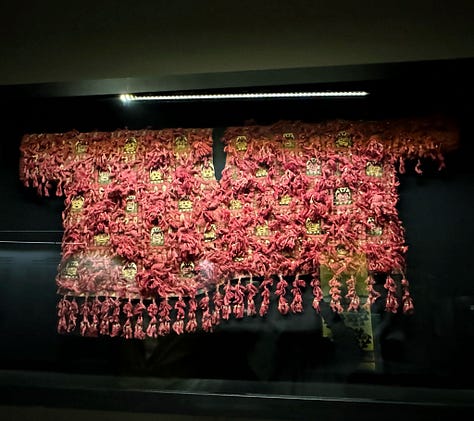
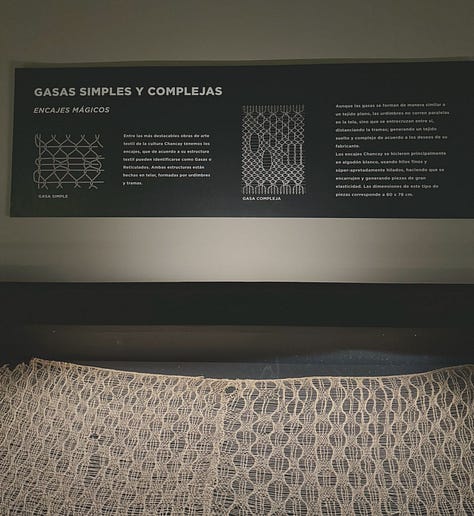


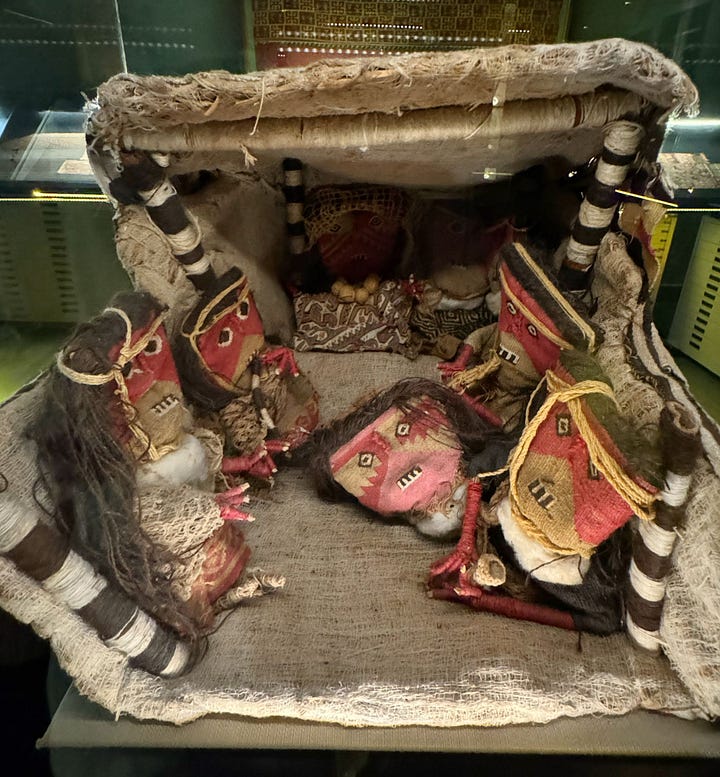
My Peruvian yarn odyssey began in Lima. Between sips of pisco sour and bites of ceviche, I made a pilgrimage to the Amano Museum of Pre-Columbian Textiles. This hidden gem, founded by the passionate collector Yoshitaro Amano, offers a mind-blowing look at Peru's rich textile history.
When most people think of Peruvian textiles, they probably picture colorful alpaca sweaters or maybe Incan tapestries. But the Amano Museum blew my mind with its incredible collection that spans thousands of years. Turns out, Peru's textile tradition goes way deeper than I ever imagined. As I wandered through exhibits showcasing pieces from ancient cultures I'd never even heard of – Chavin, Paracas, Nasca, Mochica, and Huari – I felt like a textile time traveler. These civilizations thrived long before the Incas, some dating back to 500 BCE.
But here's what really got my knitter's heart racing: amidst all the beautiful woven fabrics, I stumbled upon examples of ancient needle knitting. Can you believe it? People were knitting in Peru over 2,000 years ago! The Paracas and Nasca cultures, in particular, created intricate embroideries that left me in awe. These weren't just simple designs – we're talking detailed depictions of animals, scenes from everyday life, and some seriously wild supernatural figures that looked like they jumped straight out of a fantasy novel. Standing there, surrounded by these ancient textile treasures, I couldn't help but feel a connection to these long-gone artisans and wonder what they'd think of our modern knitting techniques.
Pro Tip: If you can't make it to Peru, check out the famous “Paracas Textile” at the Brooklyn Museum. Its border is like a prehistoric comic strip of life on Peru's South Coast – 96 tiny figures telling countless stories.
My quest for exceptional yarn bore fruit on day one at the Amano Museum Shop. I know, I know – museum shops can be hit or miss, often with sky-high prices. But I couldn't resist snagging some skeins from Frigg_Textile: some baby alpaca dyed with Colle (a vibrant yellow) and some high Andean sheep yarn hand-dyed with cochineal.
With these treasures tucked away, I resisted the siren call of Lima's regular yarn shops. My mission was clear: find the most authentic, artisanal yarns Peru had to offer. The rest of my time in Lima? A delicious blur of ceviche and local markets exploration before heading to Cusco.
Cusco: Where Tourist Traps and Textile Traditions Collide
Cusco, the gateway to Machu Picchu, is arguably Peru's most popular city. It's also ground zero for the alpaca product explosion. Every corner boasts shops selling "alpaca" everything: sweaters, shawls, cardigans, hats, socks – you name it, they've alpaca-fied it.
But here's the uncomfortable truth: most of these items are cheap, mass-produced imitations. They're about as handmade as a factory-fresh smartphone.
As I explored Cusco's markets, a disheartening trend emerged. Tourism has pushed many artisans towards selling identical, mass-produced goods found in every corner of Peru. It's like walking down a supermarket aisle – the same products, different packaging.
Here's a yarn explorer's pro tip: develop your sense of touch! When you visit a yarn store, even if some skeins are out of your price range, feel them. Train your fingers to discern the good from the bad. This isn't a museum – touching is encouraged (and essential)!
It's hard to blame the vendors, though. Fast fashion has conditioned consumers to expect dirt-cheap clothing. Few people today are willing (or able) to pay the true cost of a handmade woolen item.
Despite Cusco's abundance of "alpaca" stores, I couldn't find a single shop catering to knitters. Most souvenir stores sell Indiecita DK – an alpaca yarn produced by the large company Michell. But I was after something truly artisanal and special.
Chinchero Charm: Where Weavers Spin Magic
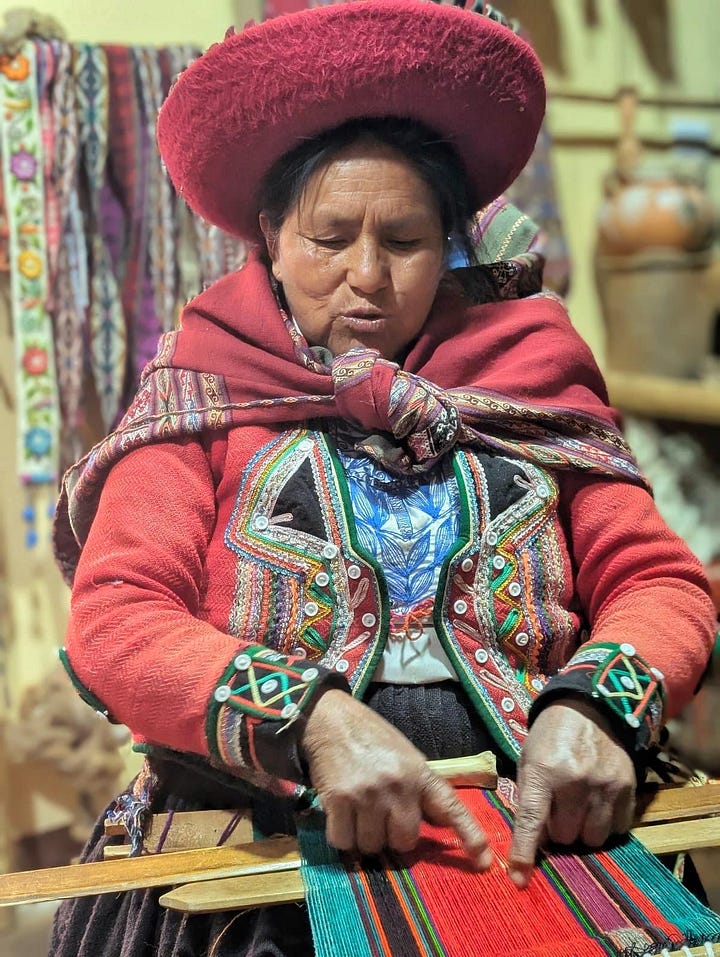



Just when I was about to unravel in despair, a chance encounter in Chinchero would change everything. As the sun dipped low and most sellers packed up for the day, my eagle-eyed boyfriend spotted a woman weaving at a small souvenir shop.
We struck up a conversation, and I discovered that behind the typical tourist trinkets, she had a traditional studio where she and her family dyed, spun, and wove fibers into stunning ponchos and blankets.
Norberta, our newfound fiber artist friend, generously demonstrated her entire process. I watched in awe as she transformed cochineal bugs into vibrant dye, coaxing rich colors from nature's palette. Her studio housed dozens of handspun yarns that left me speechless.
However, as their specialty was woven fabrics, the twist was too tight for knitting. Nonetheless, I was so enchanted by Norberta's store, process, and products that I purchased a poncho, and she kindly gifted me a small ball of undyed alpaca yarn – the only one soft enough for knitting. That little gesture rekindled my hope after all the time wandering through Cusco's tourist traps.
Chasing Clouds: The Great Vicuña Yarn Hunt
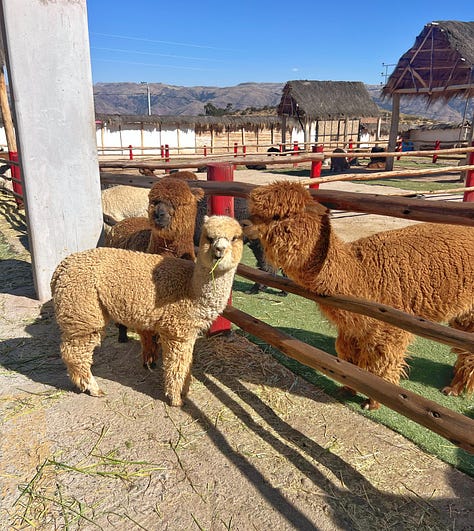
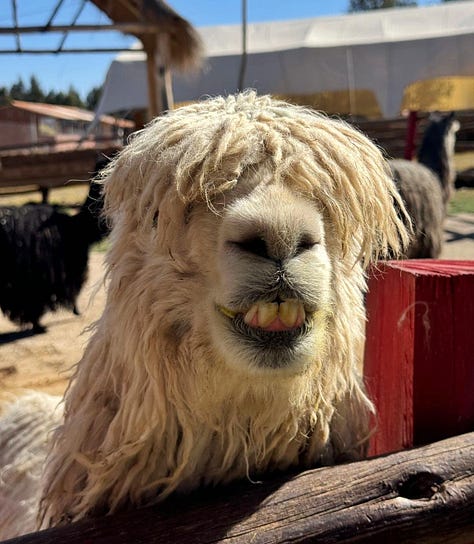
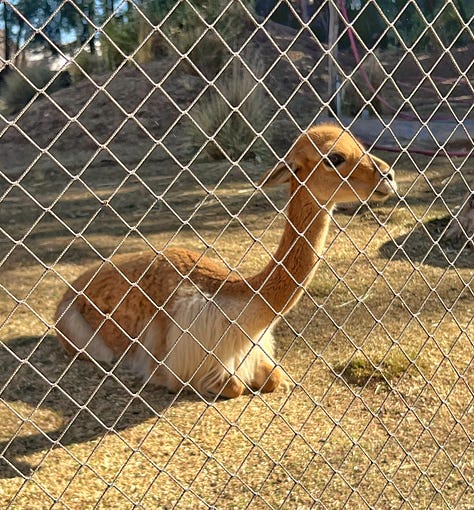
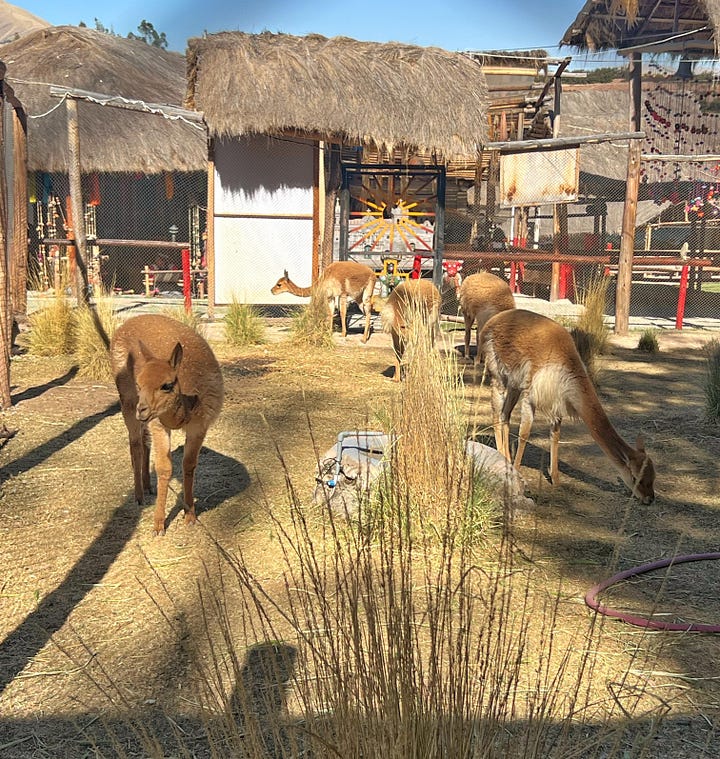
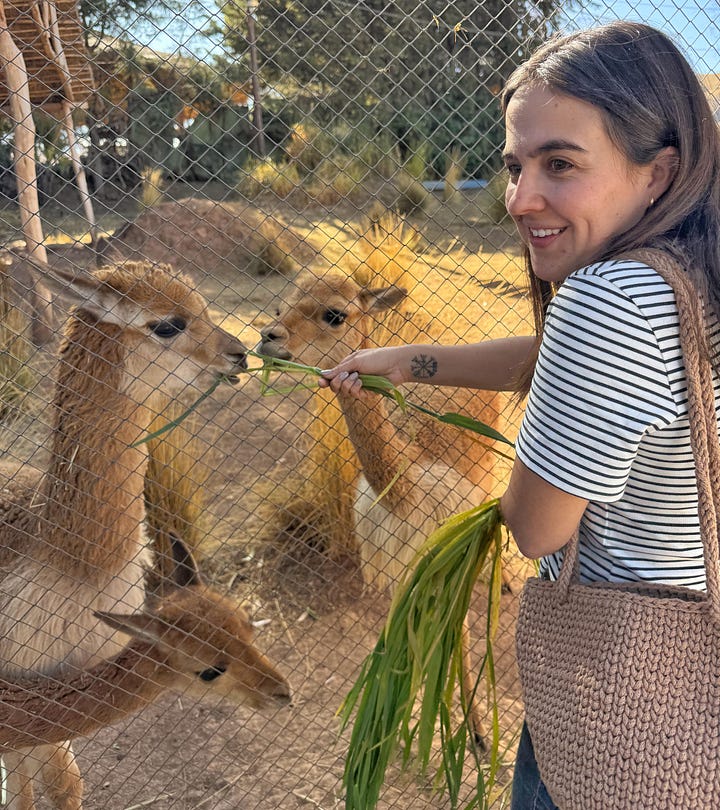
But my Peruvian yarn adventure wasn't over yet. I had one more fiber-filled mission, a quest I'd been saving for just the right moment. Like a teenager who'd squirreled away their allowance for months, I was on the hunt for the holy grail of yarn: vicuña. Even a tiny bit would do. (Side note: I always encourage responsible spending! Don't go into debt for yarn, no matter how luscious it is!)
Finding vicuña yarn proved to be my greatest challenge. While vicuña items are available in several stores, they come with eye-watering price tags. We're talking 2,000 USD for a small scarf, 8,000 USD for a sweater, and I even spotted a coat for a cool 50k! Moreover, these are all sold as finished garments – no loose yarn in sight.
Just when I thought my vicuña dreams might remain unfulfilled, fate smiled upon me. A local driver tipped me off about a place called: Manos de la Comunidad. A unique establishment that's part alpaca store, part farm, and part animal shelter. Here, visitors can see various alpacas, llamas, guanacos, and yes, even my beloved vicuñas! It's a fiber enthusiast's petting zoo dream come true.
Understanding my passion for yarn (and my budget constraints), the kind tour guide at Manos de la Comunidad agreed to sell me the small balls of vicuña yarn they had for display. This was a far cry from the 1kg minimum at 5,000 USD that the store manager had initially offered. For an animal lover and yarn enthusiast like myself, this experience was the crowning moment of my trip.
Unraveling Traditions: The Price of Fast Fashion in Peru
As I prepared to leave Peru, my treasured vicuña yarn nestled in my purse next to my passport, I found myself reflecting on the broader implications of my quest. My visit to Norberta's store had opened my eyes to the far-reaching effects of fast fashion, even in communities hundreds of kilometers from the nearest chain store.
Global brands like Zara, H&M, Forever 21, and Shein have accustomed us to sweaters costing merely 20-30 USD. Artisans like Norberta could never produce handmade items at such prices.
While it's true that garments made with traditional techniques and high-quality materials are expensive and not accessible to everyone, it's also true that our consumption habits have shifted.
We now prefer to own 15 cheap sweaters rather than two high-quality pieces. (I'm guilty of this too, but I'm working on it! Aren't we all?)
From Peru with Love: A Yarn-Spun Call to Action

My journey through Peru fulfilled my dream of finding amazing yarns, but it also left me with a bittersweet realization. Artisans catering to tourism have had to adapt, focusing their energy on selling mass-produced items of lower quality, gradually abandoning their ancient traditional crafts.
They need to pay rent, just like we do! I just wish there was a better balance – I don't know how to achieve it yet, but I hope we get there someday.
As I packed my prized yarns – tangible threads connecting me to Peru's rich textile heritage – I couldn't help but ponder the future of these traditional crafts in our fast-paced, mass-produced world.
My hope is that by sharing this experience, we can start a conversation about the value of artisanal work and the importance of preserving these ancient skills for future generations of fiber artists and enthusiasts.
So, fellow yarn lovers, the next time you pick up your needles or hooks, take a moment to consider the journey your yarn has taken.
And if you ever find yourself in Peru, remember: the real treasure isn't just in the ancient ruins or breathtaking landscapes – it's in the hands of artisans like Norberta, spinning stories into every fiber.
Until then,
The Knitting Explorer
Fellow knitting explorers, I'd love to hear your thoughts! Have you discovered any unique yarns on your travels? Unravel your stories in the comments below!






So true and so sad. When I went back to Ecuador in 2012, the place I had loved in 1987 had vanished, including the hand-dyed and -woven textiles. In its place were the ubiquitous cheap acrylics churned out in a factory. Even sadder, none of the young people looked remotely interested in learning ancient textile skills, being completely hypnotized by their phones, like adolescents everywhere in the world. The skills are indeed being lost.
I live in Maryland and found a friend-of-a-friend who has a small local alpaca farm. My daughter and I were invited to visit. We petted a few of the alpaca, saw the spindle where she spins (though she sends some of the wool out to be spun as well), and of course walked out with several skeins of luxuriously soft alpaca yarn, undyed, a rich dark chocolate brown that was the animals’ natural coat color. It was from several of the lovely ladies we’d petted and fed treats to. So much sympathy for your quest for just the right yarn, and I’m glad you enjoyed your travels.